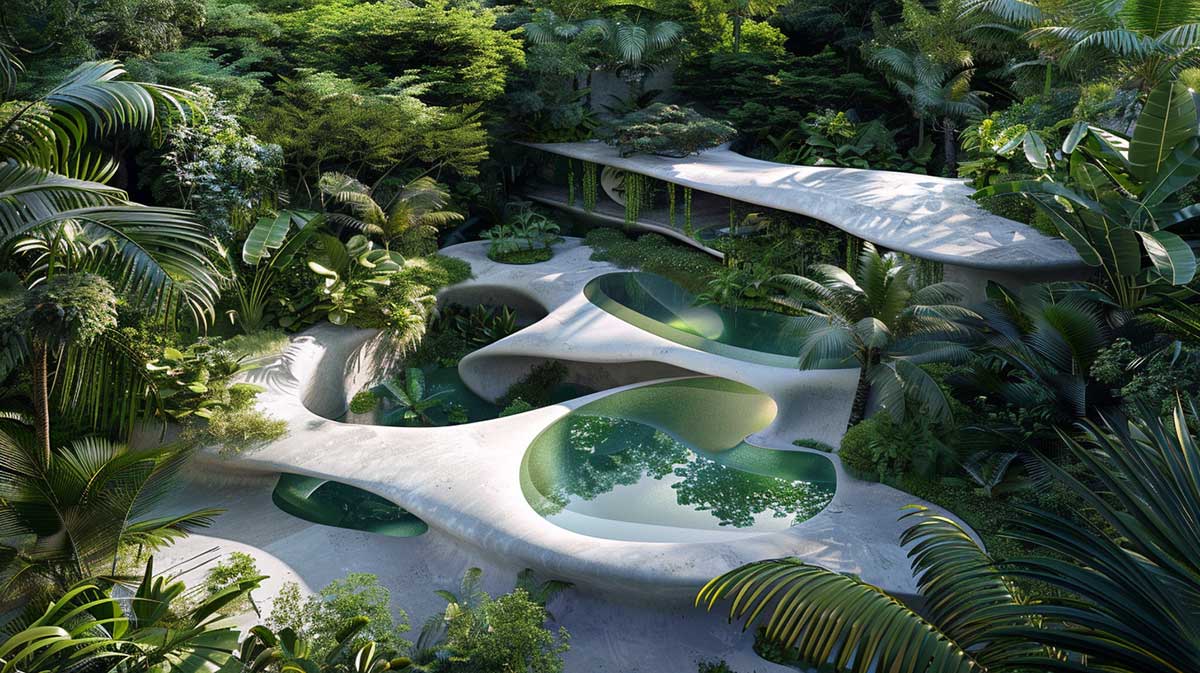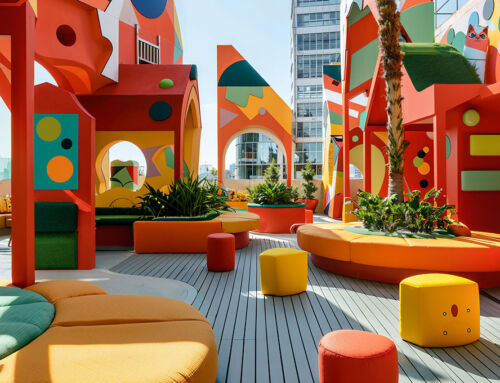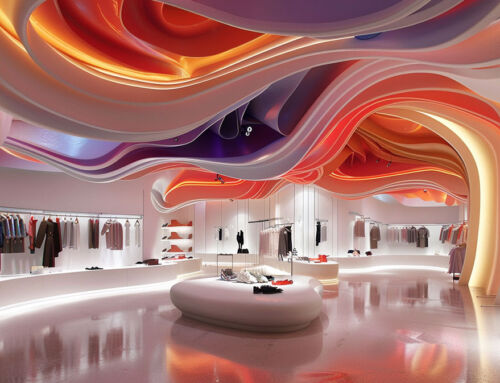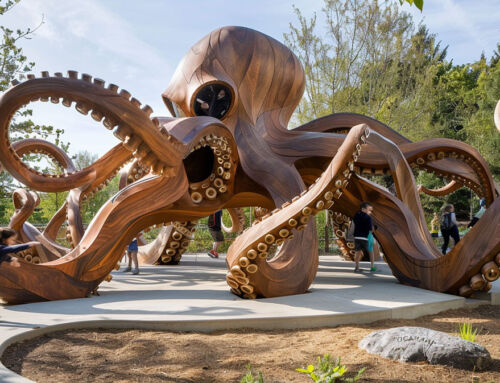With this new architecture and design proposal, Amusement Logic redefines construction in tropical environments. The project, which we illustrate for your enjoyment, represents a conceptual exercise that fuses innovative perspectives with the natural exuberance present in tropical geographies.
The structures that make up the building flow and spill into organic forms that emerge from the environment itself. A visual continuity integrates the building with the surrounding tropical vegetation. The design and architecture stand out for their beauty, but also for their functionality. They not only enhance the natural landscape, but bow reverently to it with sustainability as their banner.
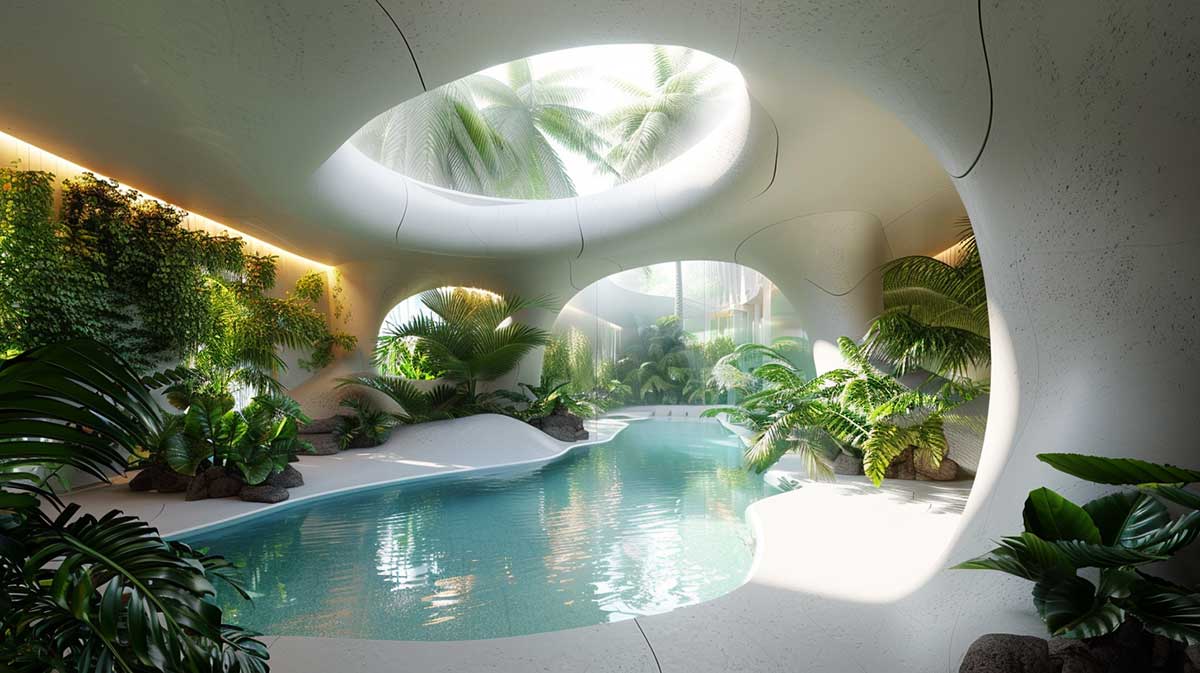
Open, light-filled spaces encourage a connection with nature. Natural light and landscape are an integral part of everyday life, the quality of which is thus inevitably elevated. The design defining the swimming pools and lounge areas maximises the sense of peace and privacy and at the same time offers a haven for rest and relaxation.
The materials, of the highest quality, are complemented by a colour palette that evokes the natural tones of stone and water. The feeling of being immersed in a kind of earthly tropical paradise is overwhelming. This Amusement Logic design proposes a new concept of luxury and offers an environmentally-friendly living experience.



